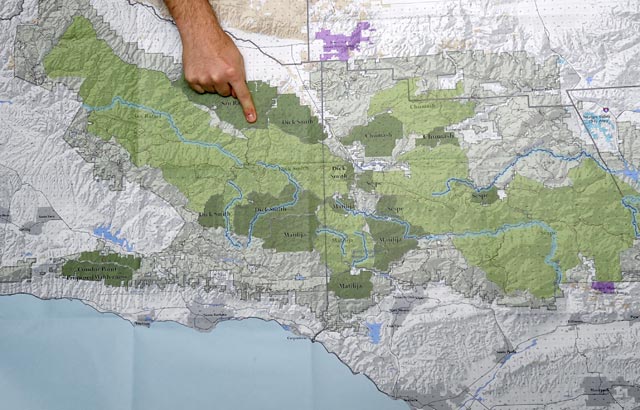Making the Los Padres Even More Wild
Effort Underway to Expand National Forest's Wilderness Areas, Including New Idea for Condor Ridge

It doesn’t get much more wild than the deep sandstone canyons, pine-studded mountain ridges, and crystal-clear creeks of Los Padres National Forest, so it’s no wonder that nearly half of the forest — whose 1.75 million or so acres stretch from Big Sur through the Santa Barbara backcountry and almost all the way to Los Angeles County — is already federally designated as wilderness. But if a growing coalition of organizations collectively known as Los Padres Wild Heritage Campaign get their way, there’ll be another 200,000 acres of forest protected by the country’s strongest land-preservation law, including a brand-new stretch of acreage called Condor Ridge, located along West Camino Cielo between the Winchester Canyon Gun Club and Refugio Road.
“It’s been 20 years since the last wilderness bill in the Los Padres,” said Jeff Kuyper of Los Padres ForestWatch, one of the primary pushers of this idea, which blocks all development on the land and bans the use of motorized/mechanized devices, including chainsaws and bicycles, but would allow for hiking, camping, hunting, and fishing. “The time is ripe for the community to get together and look at what areas are appropriate for wilderness designation and worthy of that protection.” After about a year of talks and some initial outreach to different user groups, the current proposal would essentially link together the existing but detached network of wildernesses (making the San Rafael, Dick Smith, Chumash, Matilija, and Sespe mostly contiguous), designate 124 miles of waterways (namely the Piru, Upper Sespe, Mono, Indian, and two forks of the Matilija) as “wild and scenic,” and create Condor Ridge, which Kuyper calls a “unique opportunity” because “there’s really no coastal wilderness between Big Sur and the Mexican border.”
“It would expand access to the forest for off-road users and also preserve remote and inaccessible areas of the forest from future development. … No one who has access to the forest today would lose it due to this possible legislation.”
If all goes as planned, the official proposal, which remains in a very early stage, would be fine-tuned by Congressmember Elton Gallegly (whose district includes all of the proposed wilderness additions) and then introduced as a bill in Congress, which is the only entity that can designate or take away wilderness areas. “The congressman is looking at the possibility of doing a bill whose purpose is two-fold,” said Gallegly’s spokesperson Thomas Pfeiffer. “It would expand access to the forest for off-road users and also preserve remote and inaccessible areas of the forest from future development. … No one who has access to the forest today would lose it due to this possible legislation.” When asked about the timeline, Pfeiffer laughed and said, “We are talking about Congress.”
The congressmember’s preemptive nod to off-road users isn’t just an attempt to cool his don’t-tread-on-me Republican base, as the call for more wilderness is already triggering reactions from almost all types of people who use Los Padres, from the off-highway vehicle (OHV) crowd and mountain bikers to those who do trail work and worry about wildfires. Aside from wondering why this proposal comes amid today’s budget-strapped times, they fear that the wilderness designation will lead to historic 4×4 roads being closed, popular bike trails being made off-limits, necessary work on existing trails made more difficult, creation of new trails made impossible, and firefighting made less effective.
Expecting these reactions, Los Padres Wild Heritage Campaign is conducting what Kuyper calls an “unprecedented” outreach program, explaining, “We’ve made an effort to reach out to as many stakeholders as we can.” For bikers, they’ve left a few areas that are home to popular trails, and for 4×4 fans as well as the Forest Service administrators, “We took extra effort to make sure that all existing, legally open roads would remain open.” Kuyper also assured that the wilderness designation allows exceptions for firefighting, noting that only one additional form is required to bring in the dozers or other mechanized equipment during an emergency, and that request is “routinely approved.”
The wilderness proposal, however, is sure to be anything but routine, especially when it comes to the brand-new Condor Ridge idea. Nonetheless, Kuyper is proud of the early progress, explaining, “We think it strikes a good balance.”



